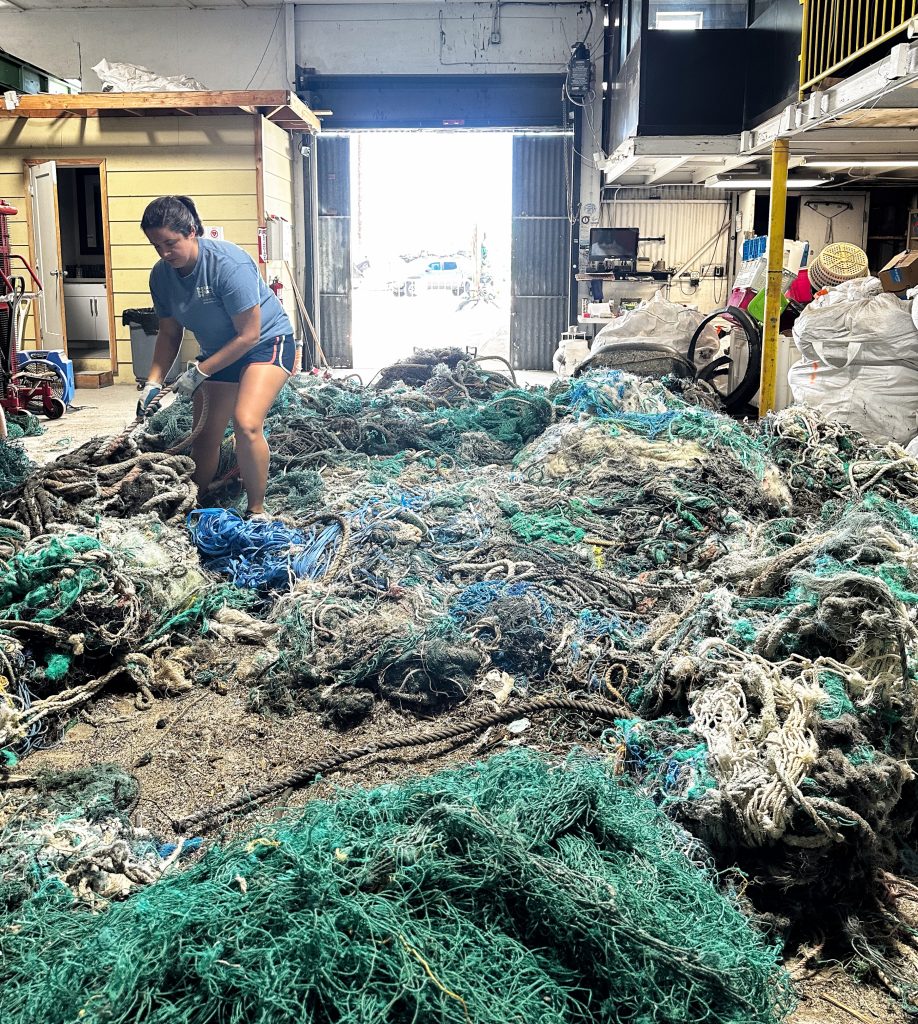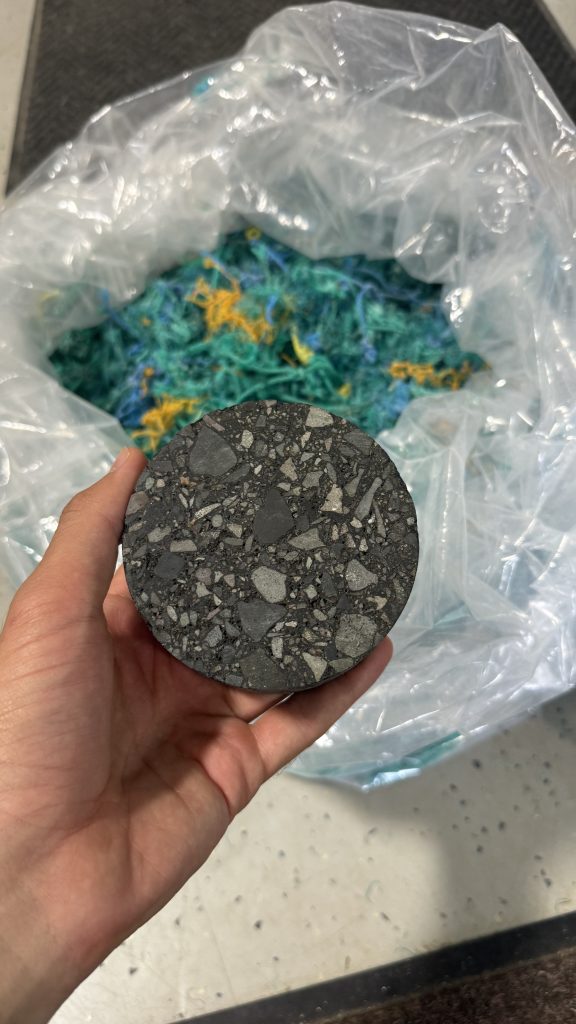 Plastic waste being sorted for recycling. (Courtesy: HPU)
Plastic waste being sorted for recycling. (Courtesy: HPU)
Just over a year ago, Hawai‘i Pacific University’s Center for Marine Debris Research launched the first and only marine debris Plastic Recycling Research Facility in the state.
The initiative aims to transform hundreds of thousands of plastic waste collected from the Pacific Ocean into long-life infrastructure products.
Since relocating to its Kalihi warehouse site in June 2024, CMDR has hauled in and processed more than 227,000 pounds of marine debris, largely derelict fishing gear such as ghost nets and floats.
Most of it is swept in through swirling currents from the North Pacific Garbage Patch, where it is then collected by partners on various neighbor islands or by the Hawai‘i Longline Association and other commercial fishers through the Bounty Project — offering $1 for every pound of derelict fishing gear debris collected.
ARTICLE CONTINUES BELOW AD
“These plastics drift from across the Pacific, accumulating in the North Pacific Gyre and eventually snagging on Hawai‘i’s fragile coral reefs before washing up on the shores,” said Mafalda de Freitas, HPU environmental scientist and CMDR megaplastic program director.
After more than a year of research, the center determined the waste is overwhelmingly not from Hawaiʻi. According to de Freitas, “No Hawaiʻi-based fishermen use the type of trawl nets we find; this debris is overwhelmingly foreign.”
 Mafalda de Freitas at HPU’s CMDR Facility. (Courtesy: HPU)
Mafalda de Freitas at HPU’s CMDR Facility. (Courtesy: HPU)
The Bounty Project sees involvement from across the islands, including Kaua‘i (Surfrider Foundation), Maui (SHARKastics) and Hawai‘i Island (Hawai‘i Wildlife Fund). Up to twice per year, the collected debris stored at partner sites are transported in a large shipping container to CMDR’s warehouse.
Recently on Maui, Pacific Whale Foundation reported removing over 8,000 pounds of marine debris from Maui waters, which was also part of the Bounty Project.
ARTICLE CONTINUES BELOW AD
Volunteers, including HPU students, meticulously sort the debris by type and polymer. The center plans to install plastic recycling machinery to convert this debris into usable products in partnership with local businesses.
CMDR has collaborated with First Star Recycling in Omaha, Neb., to test converting fishing nets into 100% recycled plastic lumber – with the plan to bring the technology to Hawai‘i. CMDR says this lumber can be used for decking, fencing, picnic benches and could have the potential to reduce Hawai‘i’s reliance on some imported materials and products.
The team is also looking to explore innovative forms of manufacturing, including large format 3D printing, to increase technical skills and capabilities in the local community.
“We’re turning a major environmental problem into a tangible solution,” de Freitas said. “Our goal is to produce products locally, sustainably, and durably, enhancing our community’s resilience and self-sufficiency, especially when it comes to building housing.”
ARTICLE CONTINUES BELOW AD
In addition to recycled lumber, CMDR has partnered with a Kaua‘i-based contractor to develop innovative construction technologies such as “spider ties,” interlocking scaffolding structures that simplify concrete wall construction. This advancement holds the potential to reduce construction costs compared to other forms of masonry while embedding and retaining carbon from the plastic inside structures, per the center.
“We want to continually experiment with new product formulations,” de Freitas said. “Every successful product brings us one step closer to a circular economy.”
ARTICLE CONTINUES BELOW ADARTICLE CONTINUES BELOW AD
Notably, CMDR helped to pioneer an effort to incorporate recycled plastics into local roadways through the “Nets-to-Roads” project, replacing virgin plastics imported from outside of the state for asphalt roads. This initiative incorporates shredded marine plastics into asphalt, creating road pavement that is more sustainable and diverting the marine debris plastic from incineration.
 A piece of road from the Nets-to-Roads program. (Credit: JD Pells)
A piece of road from the Nets-to-Roads program. (Credit: JD Pells)
For the marine debris that cannot easily be recycled, CMDR created the “Nets-to-Energy” program, a partnership with Radius Recycling (a subsidiary of Toyota Group), POP Fishing and Marine Supply and Covanta – H-Power. This program incinerates the majority of the marine debris to help power the City and County of Honolulu.
“One issue we are facing right now at our current location is the need for additional space,” de Freitas said. “If we can find a bigger location on the harbor, we can accept more plastics, get heavy lifting machinery that will help us work even faster and harder to help create a sustainable, renewable solution to the marine debris crisis in Hawai‘i. If anyone out there can help, please reach out.”
De Freitas can be reached via email at: mfreitas@hpu.edu.
For more information on HPU’s efforts and other CMDR’s projects, go to www.hpu.edu/cmdr.
